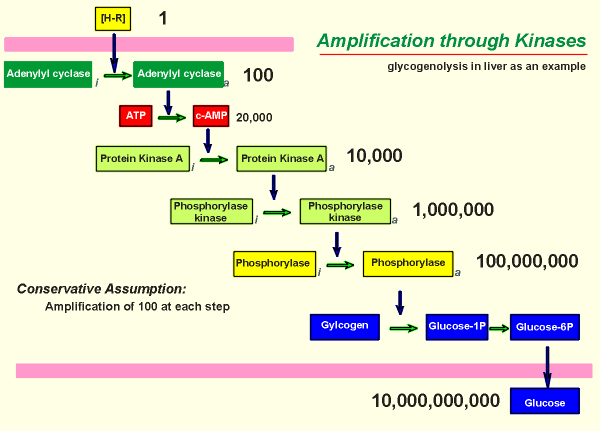 Given to
the right is the chain of events in a liver cell activated by noradrenaline.
Given to
the right is the chain of events in a liver cell activated by noradrenaline. Given to
the right is the chain of events in a liver cell activated by noradrenaline.
Given to
the right is the chain of events in a liver cell activated by noradrenaline.
For each hormone receptor complex formed (H-R) approximately 100 adenylyl cyclase molecules are activated.
Each active adenylyl cyclase produces 200 cyclic AMP molecules, so we have a total of 20,000 cyclic AMP molecules.
This in turn can produce 10,000 active catalytic subunits of PKA, each of which activates 100 phosphorylase kinases, an enzyme that phosphorylates and activates the enzyme phosphorylase.
Thus we end up with 1,000,000 activated phosphorylase kinases which in in turn activates 100,000,000 phosphorylases (the enzyme which responsible for the rate-limiting step of glycogenolysis).
Each phosphorylase is responsible for generating 100 glucose molecules and thus we end up with an amplification of 10,000,000,000.
This is a good example of why hormones and neurotransmitters, working through G protein coupled receptor mechanisms and second messengers, are so potent.
Note: the enzyme cascade illustrated above corresponds to the cellular program of the liver cell described earlier (review cellular programs?).